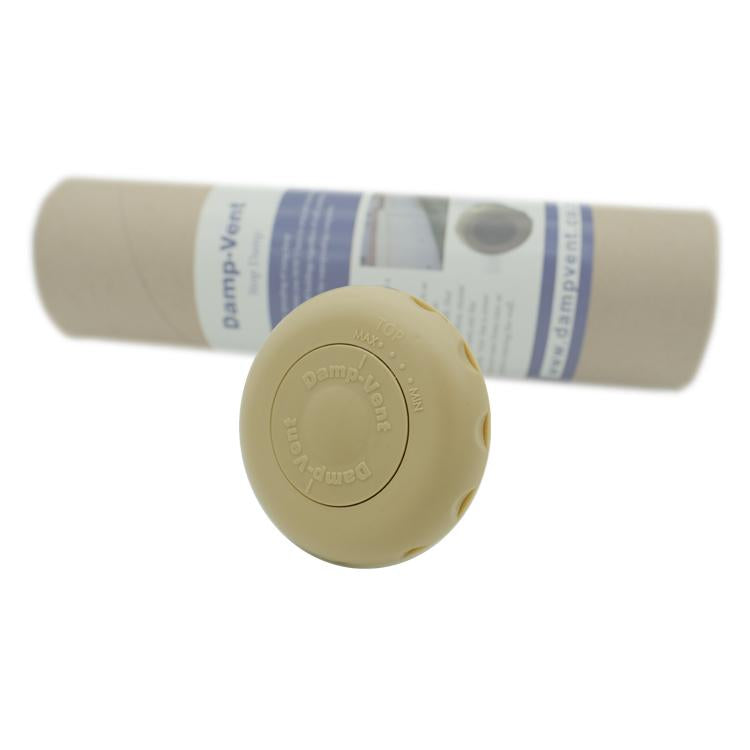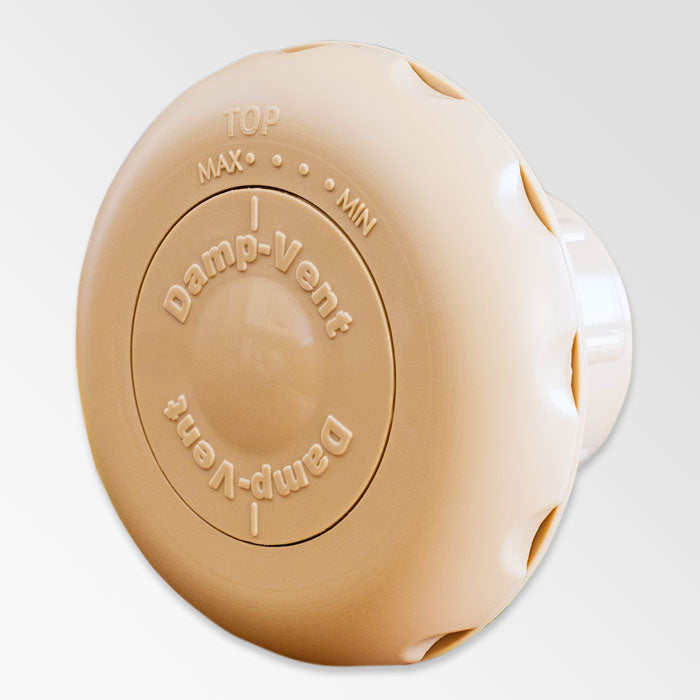Your Cart
Frequently Asked Questions
How does the Damp-Vent plug work?
The Damp-Vent plugs prevent further spreading of damp, helping the affected wall to ‘breathe’. Often moisture stays trapped in the wall after treatments like waterproofing. This causes the walls to crack and peel time and again. Installing Damp-Vent plugs lessens the likelihood of plaster and paint peeling further. It also accelerates the drying out of your walls.
How long will it take before my walls will be dry?
Damp-Vent will start working immediately after installation, but results will take time. It can take a couple of months up to a year depending on the type of walls.
What equipment is required for installation?
You require a Rotary Hammer Drill & 40mm SDS Max Masonry drill bit (recommended). The 40mm SDS Core bit will also work. This can be hired from most Tool Hire Shops.
How deep do I need to drill?
Drill into the centre cavity of the wall between the front and back layers of bricks (+/- 140mm). If there is no cavity, drill straight through the wall, and fit the plugs on either side. If it's not possible to drill straight through, drill halfway through and fit the plug/s on one side only.
What is the ideal spacing of the plugs?
Depending on the severity of your damp, the ideal spacing between plugs is 300-500mm apart. The suggested height is 300mm from the floor (or can be placed at height where damp is most prominent).
Do I need to place Damp-Vents on the whole wall if only a portion of the wall has damp?
Vents need to be installed directly into the problem damp area. We also recommend that Vents are placed at least 1000mm past the damp area, with 300mm gaps between vents.
Can Damp-Vent plugs be used in a bathroom?
No. It won’t be that effective.. The damp in a bathroom is usually caused by a plumbing leak, or from continuous condensation from steam. It can be relieved with sufficient room ventilation or by identifying the leak. Damp-Vent plugs are more effective for rising damp issues, or external penetrating damp, assisting the internal damp in the wall to ventilate, and eventually dry up.
How long do the Damp-Vent plugs last? And do you have to change them regularly?
They last for a very long time. You leave the plugs in the affected wall/s indefinitely. You can see it as a wall fixture. As long as the plugs are in, the damp will be ventilated.
Are the Damp-Vent plugs suitable for exterior use?
Most definitely. Works well on exterior walls, and the plugs have a seal preventing rainwater/sprinklers and insects from penetrating it, yet at the same time providing damp ventilation.
Will the Damp-Vent plugs work for Nutec houses?
Yes, it would work. Nutec houses are made from fiber cement boards. The plugs will provide damp ventilation.
Will the Damp-Vent plugs be effective in older stone walls?
Yes, it will provide damp ventilation in stone walls.
Which color does the Damp-Vent plugs come in?
It only comes in a light beige color, which can be painted the same color as your wall (just don’t paint over the top ventilation hole).
What if my Double Wall does not have a cavity?
It does not matter, you just have to drill straight through – and insert one plug on each side.
DIY Installation Guidelines
The ideal plug spacing is 300-500mm apart, therefore you require 2-3 plugs per meter of wall (per side).
The suggested height is 300mm from the floor(or can be placed at height where damp is most prominent).
You require a Rotary Hammer Drill & 40mm SDS Max Masonry drill bit (recommended). The 40mm SDS Core bit will also work. This can be hired from most Tool Hire Shops.
If possible you should drill straight through the wall, and insert the plugs on either side (for maximum efficiency). For Cavity Walls: drill into the centre cavity of the wall between the front and back layers of bricks (+/- 140mm).
Handy Tips
Try to identify the source of the problem, where possible damp is coming from.
Avoid spending Thousands on Damp-Proofing systems and waterproofing of walls. If the walls are not completely dry, the same problem will re-occur and your plaster will flake again.
Expensive paints are not necessarily the best option for a damp wall, as it is more concentrated and doesn’t allow the wall to “ breathe”. Often less expensive paints are more diluted.


